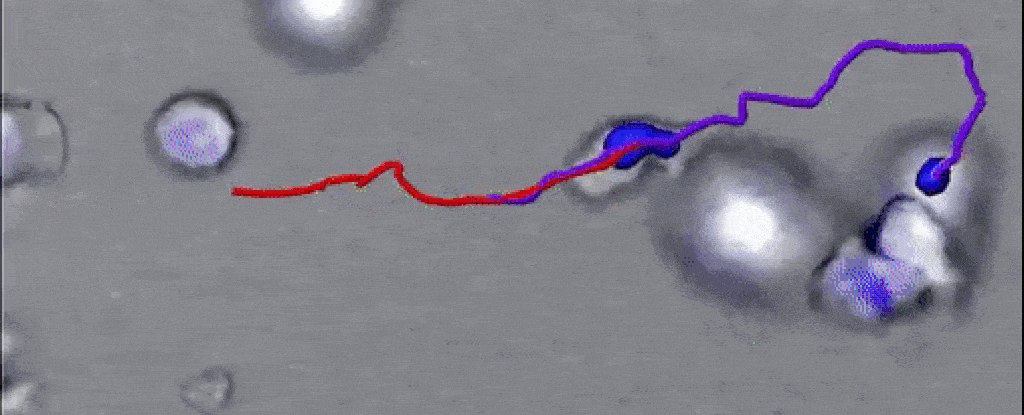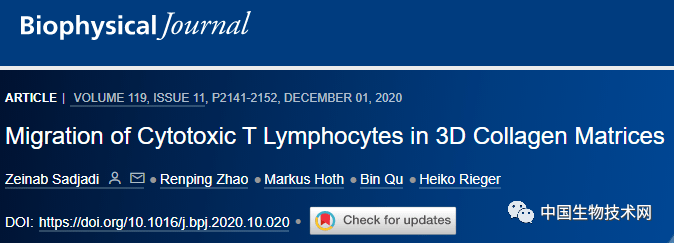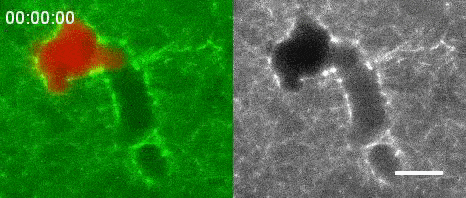How CTLs (killer T cells) clear obstacles?
How CTLs (killer T cells) clear obstacles?
How CTLs (killer T cells) clear obstacles?. We all know that when a pathogen attacks the body, our immune system will recognize it and summon immune cells to fight back to eliminate the invader. Cytotoxic T lymphocytes (CTL) and natural killer cells (NK) are the main cytotoxic killer cells of the human body, which can eliminate pathogen infection or cancer cells (target cells). But for the complex biological microenvironment in the body, especially the dense tissues, how did they get through and reach the “location of crime” after receiving the signal?


Recently, in a study published in “Biophysical Journal”, a research team from Saarland University in Germany demonstrated through experiments that these cells are like excavators in the tissues while clearing obstacles while opening tunnels to help The “rescue forces” cleared the obstacles (pictured above).

Under the light-sheet microscope, we can see that when the red CTL passes through the green collagen fibers, a channel is dug while pushing (the picture below).

CTLs are also known as killer T cells. They look for specific molecules that indicate problem cells (antigens) and destroy infected, cancerous, or other damaged cells (target cells). At the beginning of a disease or infection, the number of these target cells is usually low. Therefore, the ability of CTLs to find them quickly is very important for an effective immune response.
The corresponding author of the study, Heiko Rieger, a theoretical physicist at the University of Saran, said: “Understanding the migration and interaction of immune cells in the collagen network is essential to unravel the underlying details of the immune response and design effective treatment strategies.”
Generally, the target cells of killer T cells are located in a dense extracellular matrix. The extracellular matrix is a complex network composed of various macromolecules between cells in the body, which provides anchoring, structural support and biochemical signals for our cells.
There are different types of extracellular matrix, including plasma and connective tissue. These tissues are complex obstacles, they are adhered together by collagen fiber scaffolds, elastin and viscous proteins. Extracellular vesicles and cells are in it, and capillaries pass through it.
In this new study, Zeinab Sadjadi, a biophysicist at Saarland University and his colleagues used bovine collagen to construct a 3D extracellular matrix model in vitro. With this model, the researchers observed how killer T cells from two blood donors migrated in different densities of the matrix.
The researchers found that killer T cells have two states of slow swing and fast movement, as well as a movement mode that switches between the two. As they move through the tissue, human cells push and pull the collagen fibers to open a tunnel that allows other immune components to use. Researchers speculate that this is the mode of movement they use to find target cells and open tunnels.
Experiments have shown that T cells follow each other in these tunnels, as seen in the animation above. Once the channel is established, they will change to move faster.
Of course, this discovery was only confirmed in a simplified model of scientists, and has not been confirmed in the much more complex actual human connective tissue, but a similar migration pattern was also observed in another type of immune cell.
Rieger said: “The similarity of the trajectories of cytotoxic lymphocytes and natural killer cells points to a common mechanism for the migration of the two cells through the collagen network.”
Previous studies have found that killer T cells actively attack the inflamed connective tissue of rats, which supports the idea that they can manipulate the extracellular matrix and even cause arthritis.
Rieger said: “Our research shows that regulating the properties of tissue extracellular matrix will have an impact on the efficiency of the immune response and may provide new strategies for cancer treatment. Understanding how these cells move will allow us to help dismantle or strengthen the barrier. To help the immune system.”
Link to the paper: https://doi.org/10.1016/j.bpj.2020.10.020
(source:internet)
Disclaimer of medicaltrend.org



